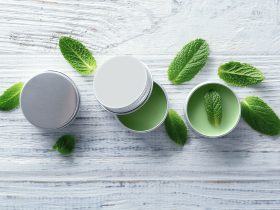Many individuals invest significant time using potentially harmful beauty products to maintain youthful and radiant skin. However, there’s a safer alternative: hyaluronic acid. This compound not only promotes skin radiance and helps maintain your skin’s barrier, but also provides benefits for joint health, all without the adverse effects associated with toxic skincare products.
Hyaluronic acid, also known as hyaluronan, comes highly recommended by dermatologists and other healthcare professionals for its remarkable ability to enhance skin texture and appearance. Additionally, it aids in alleviating joint pain and addressing other aging-related symptoms.
While it is commonly found in expensive anti-aging skincare serums, hyaluronic acid is also present in formulations designed to support joint health, treat cold sores, and in products like eye drops and lip balms.
What Is Hyaluronic Acid?
Hyaluronic acid is a clear, lubricating substance naturally produced by the body. It is found in highest concentrations in the skin, joints, eye sockets, and other tissues, where it plays various roles such as retaining collagen, increasing moisture, and providing elasticity and flexibility.
Originally derived from rooster comb, hyaluronic acid is now typically produced through a lab-created fermentation process. It is available in liquid and powder forms, with the powder form being preferable due to the absence of preservatives like propylene glycol and alcohol.
Today, hyaluronic acid is incorporated into a variety of anti-aging beauty and healthcare products, including lotions, creams, serums, and supplements. It is also used in injection form by dermatologists.
While topically applied hyaluronic acid cannot be absorbed, its salt form, sodium hyaluronate, can penetrate the skin and is commonly found in creams and other skincare products.
Hyaluronic acid’s main advantage lies in its ability to retain water, giving it a high capacity for hydration and viscosity. It is distributed throughout the body, with significant concentrations in the skin, tendons, joints, eyes, and various other tissues.
Research has shown that hyaluronic acid has numerous beneficial functions, including hydration, joint lubrication, tissue filling, cell migration facilitation, wound repair, inflammation regulation, immune response enhancement, fibroblast injury repair, and maintenance of skin epithelial cells.
Health Benefits of Hyaluronic Acid
- Helps Reduce Wrinkles
Using a topical hyaluronic acid product can lead to increased skin surface hydration within weeks. While most research suggests it takes about six weeks or more to see significant improvements in skin appearance, some studies have shown that anti-wrinkle hyaluronic acid serums and eye creams can start working in as little as two to four weeks.
Dermatologists also use prescription injections or formulas containing hyaluronic acid for more substantial anti-aging results over several months, targeting lip and eye sagginess.
A 2014 double-blind, randomized clinical trial published in the Journal of Cosmetic Dermatology demonstrated the effectiveness of products containing hyaluronic acid in reducing wrinkles and skin sagging within 30 days of consistent use.
Participants experienced fuller lips and increased cheek volume, traits associated with youthful appearance. The study involved 40 adult women with mild to moderate skin aging signs, who applied a product containing six forms of hyaluronic acid or a placebo.
Significant improvements in facial contours, lip volume, and wrinkle depth and volume were observed in the active treatment group compared to the placebo group.
Another study, published in the Journal of Clinical and Aesthetic Dermatology, evaluated the efficacy of a new topical low molecular nano-hyaluronic acid preparation for wrinkles, skin hydration, and skin elasticity in 33 women with an average age of 45 over eight weeks.
Results showed a significant moisturizing effect, improved skin texture, and enhanced skin elasticity. The new nano-hyaluronic acid demonstrated a significant benefit in decreasing wrinkle depth (up to 40 percent), increasing skin hydration (up to 96 percent), and enhancing skin firmness and elasticity (up to 55 percent) by the end of the study period.
- Reduces Joint Stiffness and Ache
Hyaluronic acid plays a crucial role in lubricating and supporting joints throughout the body, including bones, connecting tissues, tendons, and cartilage structures.
It is particularly abundant in hyaline cartilage, which covers the ends of bones and provides cushioning, helping to reduce pain and tenderness associated with degenerative joint diseases.
Moreover, hyaluronic acid is present in the synovial membrane, which forms a protective layer over articulating bones and produces synovial fluid. This fluid, known as a “viscous fluid,” helps joints absorb shock, maintain elasticity, and deliver nutrients to cartilage.
Due to its beneficial effects on joint health, hyaluronic acid is commonly used in supplements for treating osteoarthritis pain and injuries. The U.S. Food and Drug Administration has approved its use for osteoarthritis treatment through injections administered by healthcare providers.
Research suggests that even lower doses of hyaluronic acid can effectively reduce joint stiffness and chronic pain, although results may vary. Commonly treated joint pains with hyaluronic acid include those affecting the elbows and knees.
- Skin Hydration
There is a big difference between hydration and moisturization for the skin and hyaluronic acid is one of the best skin hydrators.
Hyaluronic acid serves as a hydrator, with many people noticing dewier skin, lighter under-eye bags, and smoother texture after using serums containing it. It helps improve the appearance of chronoaged skin, caused by sun exposure, by reducing water loss.
As we age, our skin’s ability to bind and retain water diminishes, leading to dryness, drooping, and sagginess.
Both intrinsic and extrinsic factors contribute to skin aging, including environmental pollutants and UV exposure. Hyaluronic acid synthesis, deposition, and degradation are regulated within the skin, affecting its hydration levels. Prolonged sun exposure can lead to stratum corneum dryness, contributing to wrinkle formation.
Low humidity environments exacerbate skin dryness and visibility of wrinkles and fine lines. Hyaluronic acid helps combat these effects by reducing epidermal water loss, thus naturally diminishing signs of aging like dryness, flakiness, and wrinkles.
- Helps Repair Wounds, Sunburns, and Sores
In addition to its anti-aging properties, hyaluronic acid is also beneficial for treating various skin issues such as cold sores, mouth sores, ulcers, wounds, bites, and burns due to its ability to maintain moisture in damaged tissue. It is also effective in providing relief from sunburn.
Many treatments for cold sores and mouth sores contain hyaluronic acid gel to accelerate the healing process and prevent cracking or bleeding.
Hyaluronic acid plays a structural role in the mouth and lips, which are composed of connective tissues containing collagen and water. Collagen and hyaluronic acid contribute to the structure and shape of the lips.
By binding to water, hyaluronic acid hydrates the skin and tissues in the mouth and lips, promotes tightness at skin junctions, facilitates the delivery of nutrients to damaged tissues, regulates inflammation, and aids in the removal of waste products.
- Helps Reduce the Risk of Inflammatory Bowel Disease
Naturally occurring hyaluronic acid, such as that produced by the body or found in chicken collagen, exists in large particles that play a role in gut health.
These particles may offer protection against inflammatory bowel diseases like Crohn’s disease and ulcerative colitis, as they contribute to the gut’s natural defense mechanisms and repair processes.
However, excessive use of isolated hyaluronic acid, which often comes in smaller particles compared to its natural form, can sometimes lead to increased inflammation in the gut.
Instead, incorporating hyaluronic acid-rich foods and supplements into your diet, such as bone broth or protein powder derived from bone broth, can support the gastrointestinal system’s innate healing mechanisms and potentially help prevent conditions like leaky gut syndrome.
- Helps Reduce Eye Discomfort
Hyaluronic acid plays a vital role in maintaining moisture and lubrication in the eyes. The fluid inside the eye socket, known as the vitreous humor, consists predominantly of hyaluronic acid.
Eye drops containing hyaluronic acid, such as Hyalistil, can effectively alleviate chronic dry eyes by replenishing moisture in the eye socket, promoting tear production, and restoring fluid balance.
Furthermore, hyaluronic acid has been found to have protective effects against oxidative damage caused by UVB light in the cornea, contributing to overall eye health.
Ophthalmologists often utilize lubricating hyaluronic acid formulas to manage various eye injuries and conditions, including cataracts. These eye drops are particularly beneficial during sensitive periods before or after eye surgeries, such as cataract removal, corneal transplants, or repair of a detached retina, when the eyes may be dry and vulnerable.
Hyaluronic Acid and Glucosamine – The Perfect Match
Hyaluronic acid and glucosamine both play important roles in providing elasticity and structure within joints and tissues, contributing to the reduction of pain associated with joint issues. However, they have distinct functions and benefits.
The main difference lies in their mechanisms of action: hyaluronic acid primarily provides lubrication by retaining water, while glucosamine contributes to the building of cartilage and provides structural support.
Hyaluronic acid is a crucial component of synovial fluid and articular cartilage, aiding in shock absorption and maintaining joint health. On the other hand, glucosamine, particularly when combined with chondroitin sulfate, supports cartilage health by promoting its growth and maintenance.
Using hyaluronic acid and glucosamine together can often yield the best results, as they complement each other’s functions. Additionally, research suggests that glucosamine may stimulate the production of hyaluronic acid, further enhancing joint health.
Some anti-aging formulations include a combination of hyaluronic acid, glucosamine, and other joint-supporting substances like manganese sulfate. When used together, these ingredients can effectively alleviate osteoarthritis symptoms, improve cartilage function, and replenish synovial fluids, promoting overall joint health.
Hyaluronic Acid Uses
Hyaluronic acid offers various uses for skin, eyes, and joint health:
- Hyaluronic acid injections: These are administered by dermatologists and are used for lips, eyes, or skin. Consult a dermatologist for recommendations.
- For treating dry eyes: Hyaluronic acid can be administered in liquid eye drop form three to four times daily for three months. Look for a concentration of hyaluronic acid around 0.2 percent to 0.4 percent and follow the provided directions.
- Hyaluronic acid cream/serum/lotion: Different brands contain varying concentrations and types of hyaluronic acid molecules. Effective types have multiple sizes of hyaluronic acid molecules, as they work in different ways.
Studies suggest that daily topical application of serums containing around 0.1 percent hyaluronic acid can improve skin hydration, reduce wrinkle appearance, and enhance elasticity. - Hyaluronic acid supplements for joint pain: Several hyaluronic acid treatments are approved for knee osteoarthritis in the U.S., including Hyalgan, Orthovisc, Supartz, and Synvisc. These are often derived from rooster or chicken combs and sometimes bacteria.
For adults over 18, a dosage of 50 milligrams of hyaluronic acid can be taken orally one to two times daily with meals. Research indicates that taking 80 milligrams daily (containing 60 percent to 70 percent hyaluronic acid) for eight weeks can help relieve symptoms of osteoarthritis.
Consult your doctor about hyaluronic acid injections, which may involve direct injections of about 20 milligrams into the affected joint once a week for several weeks to manage pain and inflammation.
Hyaluronic Acid Risks and Side Effects
The FDA reports that hyaluronic acid products are generally safe when taken orally or applied topically on the skin/mouth. However, hyaluronic acid supplements and injections should be avoided by pregnant or breastfeeding women due to potential risks to the fetus or baby.
Temporary hyaluronic acid dermal fillers, approved by the FDA for individuals over 21, have temporary effects as they contain materials that are absorbed by the body over time, posing no significant harm.
Research suggests that hyaluronic acid dermal fillers for facial wrinkles are generally safe if patients adhere to post-treatment instructions. Temporary side effects like mild inflammatory reactions and sun sensitivity may occur but typically resolve within two to seven days.
In rare cases, serious side effects like vascular changes (eye damage due to blood vessel blockage) and vision changes have been reported.
Side effects are more common with permanent fillers, requiring patients to follow post-treatment instructions strictly to minimize risks of inflammation and adverse reactions.
Hyaluronidase may be used to reverse filler effects in cases of complications. Hyaluronidase enzymes break down hyaluronic acid.
Prescription and commercial products containing hyaluronic acid are typically derived from lab-created bacteria or bird protein and cartilage. Individuals allergic to eggs or feathers should avoid these products to prevent allergic reactions and bleeding.
Those taking blood clotting medications like warfarin or aspirin should avoid hyaluronic acid supplements to reduce bleeding risk.
















Find Us on Socials